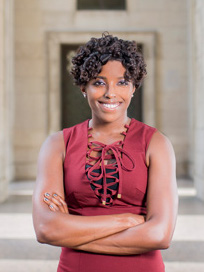
A persistent puzzle among political scientists is the counterintuitive finding that chief executives exercise their unilateral powers to achieve their policy goals less often under divided government—not more.
A new empirical analysis recently published in Legislative Studies Quarterly by Sharece Thrower, assistant professor of political science at Vanderbilt University, helps explain why.
“We hear a common narrative that presidents and governors might want to issue more executive orders as a way to get around legislatures that don’t agree with them,” said Thrower, “And certainly they have incentives to do that, but in this paper we show why that doesn’t always happen. And the answer is that it depends on the legislature’s capacity to retaliate.”
Working with Michael Barber of Brigham Young University and Alexander Bolton of Emory University, Thrower analyzed more than 24,000 executive orders issued between 1993 and 2003—the largest such analysis of gubernatorial unilateralism to date. Because all 50 states have similar—but not identical—governments, they functioned as a natural experiment for Thrower and her colleagues, allowing them to compare executive behavior under a variety of conditions.
All states, of course, have governors and legislatures. But some legislatures had very small political majorities while others had supermajorities. Some legislatures were more politically polarized than others. Some legislatures had majorities from the same party as the governor while others did not. And some legislatures were endowed with certain policymaking powers that allowed them to push back against their governors’ orders while others did not.
The researchers found that governors were less likely to act unilaterally when the legislature was well equipped to push back. “For instance, a legislature that has a large opposing majority, or a legislature with a smaller majority but low polarization may be better able to work together to oppose the governor through the lawmaking process,” Thrower said. “Likewise, a legislature that has the ability to review or overturn regulations can also constrain a governor’s power.”
However, she said, some legislatures are too polarized to cooperate enough to override a veto or retaliate through new laws, for example, while others aren’t empowered with the tools to weaken or reject policies issued by the governor. Under those circumstances, executives tend to use unilateral power more freely.
These differences help explain why executives don’t always make use of their unilateral power when facing an opposition government. “When executives face empowered legislatures, their unilateral powers are constrained,” she said. “But when they face legislatures that lack the ability to act through the policymaking process, this is where we see executive power really flourish.”